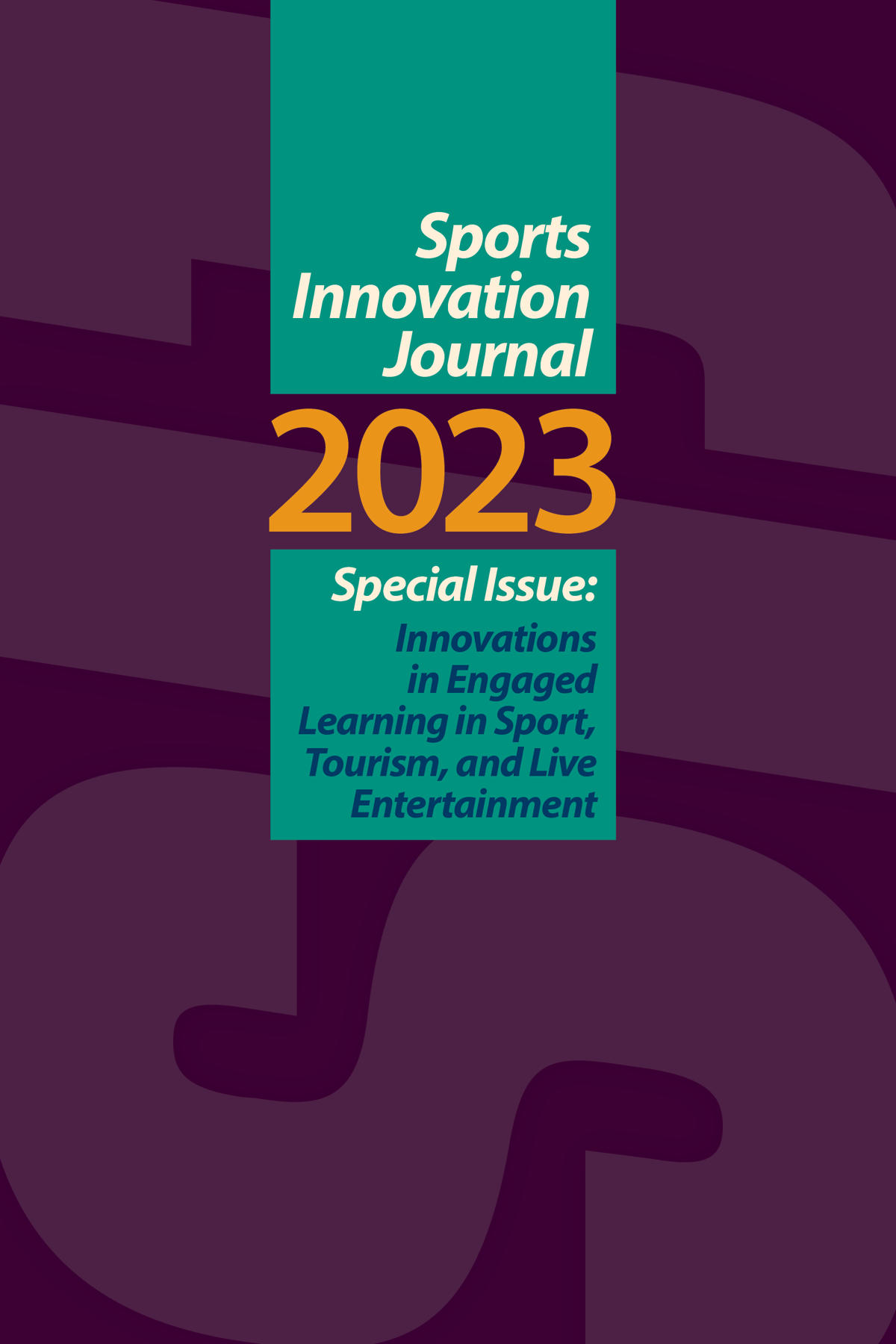“I Felt We Were Actually Learning Things, Then Applying Them”
Students’ Perceptions of a Service-Learning Course
DOI:
https://doi.org/10.18060/27392Keywords:
mindfulness and fitness intervention, student engagement, service learningAbstract
Academic journals continue to produce articles that highlight record levels of student disengagement and lack of motivation. Faculty have been encouraged to use high impact, active learning strategies to increase student engagement and success (Patrick et al., 2016). One technique, service learning, allows students to become active learners through applying learned skills and theory from the classroom to community settings (Connolly, et al., 2017). The purpose of this study was to highlight students’ perceptions and experiences through three semester-long service-learning courses where students provided a fitness and mindfulness program to local teachers to help them address stressors. Undergraduate sports management students enrolled in a service-learning course for sport development were tasked with planning, organizing, implementing, and evaluating three 9-week long programs. Students were given increased responsibility and control over the semester which resulted in real-world experiences. The students gave their perceptions and experiences in an end of semester paper. Three independent coders reviewed the papers using thematic analysis. Emergent themes were consistent with the service-learning literature suggesting increased engagement, sense of purpose, and applying knowledge. The service-learning course proved to have a positive impact on the sport management students and produced high levels of engagement. Sport management faculty could implement service-learning courses to increase student engagement and opportunities to apply theories, skills, and knowledge in real-world settings. Sport management courses should further explore using high impact, active learning environments to increase student engagement and enhance student learning outcomes.
References
Astin, A. W., Vogelgesang, L. J., Ikeda, E. K., & Yee, J. A. (2000). How service learning affects students.. Higher Education. 144. https://digitalcommons.unomaha.edu/slcehighered/144
Awidi, I. T., & Paynter, M. (2019). The impact of a flipped classroom approach on student learning experience. Computers & Education, 128, 269-283.
Bennett, G., Drane, D., & Henson, R. (2003). Student experiences with service-learning in sport management. Journal of Experiential Education, 26(2), 61–69. https://doi.org/10.1177/105382590302600203
Bootsma, M., Jeffrey, C., & Perkins, J. D. (2021). Is there learning in service learning? measuring the extent to which Vita participation improves student technical competence and Soft Skills. Issues in Accounting Education, 36(2), 21–42. https://doi.org/10.2308/issues-19-113
Bush, K. A., Edwards, M. B., Jones, G. J., Hook, J. L., & Armstrong, M. L. (2016). Service learning for social change: raising social consciousness among sport management students. Sport Management Education Journal (Human Kinetics), 10(2), 127–139.
Coates, H. (2006). The value of student engagement for higher education quality assurance. Quality in Higher Education, 11(1), 25-36.
Escofet, A., & Rubio, L. (2019). Impact Analysis of a Service-Learning University Program from the Student Perspective. Journal of Higher Education Outreach and Engagement, 23(3), 159–174.
Felten, P., & Clayton, P. H. (2011). Service‐learning. New directions for teaching and learning, 2011(128), 75-84. https://doi.org/10.1002/tl.470
Fredricks, J. A., Blumenfeld, P. C., & Paris, A. H. (2004). School engagement: Potential of the concept, state of the evidence. Review of Educational Research, 74(1), 59-109.
Johnson, D. W., & Johnson, R. T. (2018). Cooperative learning: The foundation for active learning. Active Learning—Beyond the Future, 59-71.
Krause, K. L., & Coates, H. (2008). Students’ engagement in first‐year university. Assessment & Evaluation in Higher Education, 33(5), 493-505.
Lyras, A., & Peachey, J. W. (2011). Integrating Sport-for-Development Theory and Praxis. Sport Management Review, 14(4), 311–326
Markus, G. B., Howard, J. P., & King, D. C. (1993). Notes: Integrating community service and classroom instruction enhances learning: Results from an experiment. Educational Evaluation and Policy Analysis, 15(4), 410–419. https://doi.org/10.3102/01623737015004410
Martin, T., & LeCrom, C. (2021). Considering the youth voice: needs and asset assessment in sport for development using photovoice. Auc Kinanthropologica, 57(2), 125-146.
McKenna, M. W., & Rizzo, E. (1999). Student perceptions of the “learning” in service-learning courses. Journal of Prevention & Intervention in the Community, 18(1-2), 111–123. https://doi.org/10.1300/j005v18n01_09
Mumford, V., & Kane, J. (2006). Service-learning in sports. Journal of Physical Education, Recreation & Dance, 77(3), 38–47. https://doi.org/10.1080/07303084.2006.10597843
Mumford, V., Inumgu, J. N., Johnson, J. A., & Smith, S. J. (2008). Service learning in sport management: a community health project. The Sport Journal, 11(2).
Myers, M. D. (2020). Student development in service learning: A literature review of service learning and self-authorship. College Student Journal, 54(1), 126–140.
National Survey of Student Engagement. (2022). Digging deeper into the quality of high-impact practices. https://nsse.indiana.edu/research/annual-results/2022/story2.html
Patrick, L.E., Howell, L.A., & Wischusen, W. (2016). Perceptions of active learning between faculty and undergraduates: Differing views among departments. Journal of STEM Education, 17(3), 55–63.
Pinnell, M., & Chuck, L. (2004). Developing technical competency and enhancing the Soft Skills of undergraduate mechanical engineering students through service learning. 2004 Annual Conference Proceedings. https://doi.org/10.18260/1-2--13956
Prentice, M., & Robinson, G. (2010) Improving student learning outcomes with service learning. Higher Education. 148.https://digitalcommons.unomaha.edu/slcehighered/148
Salta, K., Paschalidou, K., Tsetseri, M., & Koulougliotis, D. (2022). Shift from a traditional to a distance learning environment during the COVID-19 pandemic: university students’ engagement and interactions. Science & Education, 31(1), 93-122.
Sattler, L. A. (2018). From classroom to courtside: An examination of the experiential learning practices of sport management faculty. Journal of Hospitality, Leisure, Sport & Tourism Education, 22, 52–62. https://doi.org/10.1016/j.jhlste.2018.02.002
Spitzer, M. W. H., Gutsfeld, R., Wirzberger, M., & Moeller, K. (2021). Evaluating students’ engagement with an online learning environment during and after COVID-19 related school closures: A survival analysis approach. Trends in Neuroscience and Education, 25, 100168.
The Chronicle of Higher Education (2022, November 03). When Engagement Remains a Challenge. https://www.chronicle.com/newsletter/teaching/2022-11-03
Warren, J. L. (2012). Does service-learning increase student learning?: A meta-analysis. Michigan Journal of Community Service Learning, 18(2), 56–61.
Yorio, P. L., & Feifei, Y. (2012). A meta-analysis on the effects of service-learning on the social, personal, and cognitive outcomes of learning. Academy of Management Learning & Education, 11(1), 9–27. https://doi.org/10.5465/amle.2010.0072
Downloads
Published
Issue
Section
License
Copyright (c) 2023 Christina Gipson, Jessica Mutchler, Arshpreet Kaur Mallhi, Amanda Lambert

This work is licensed under a Creative Commons Attribution 4.0 International License.
Copyright to articles published in Sport Innovation Journal is retained by the author(s).


